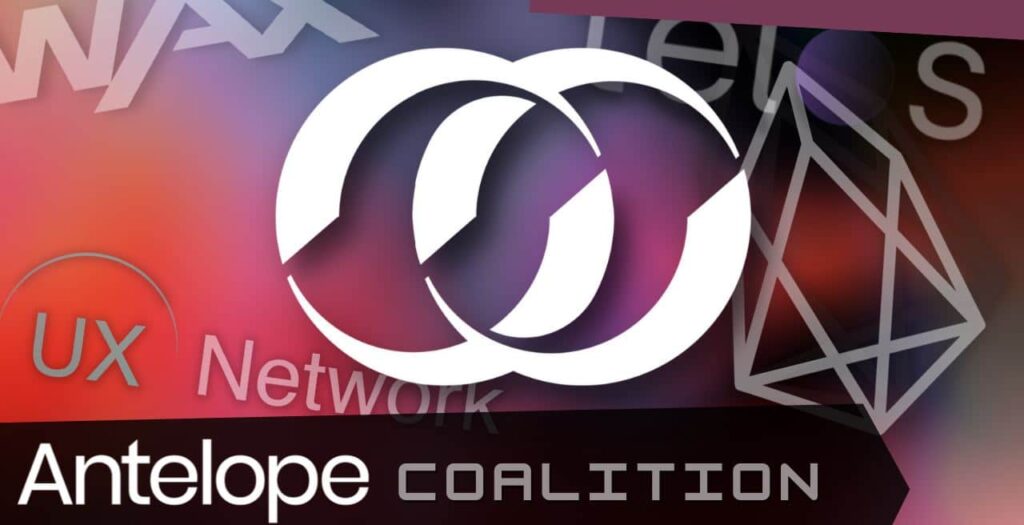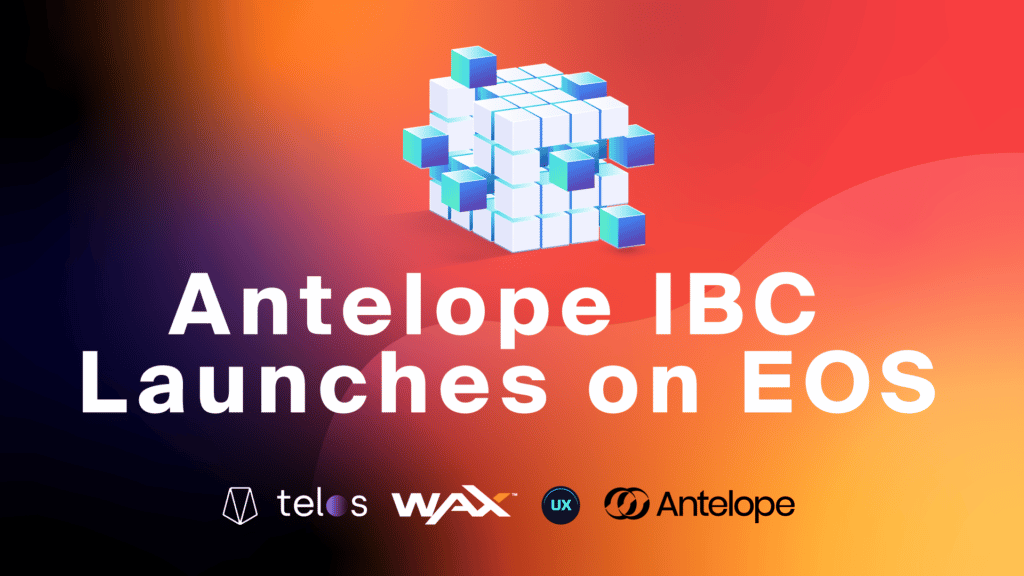Through continued weekly discussions, and “a rising tide lifts all boats” approach, The Coalition of EOS, Telos, WAX, and UX is maturing into a tremendous force for inter-chain public good infrastructure.
Despite the recent market downturn, The Coalition has found creative ways to deploy capital so as to extend the capacity for collaborative development while further strengthening the position of its respective members.
Faster Finality and IBC—Have Your Cake, and Eat It Too!
In considering the bid for the Faster Finality RFP, The Coalition had some challenging decisions to make. The initial bid from 0rigin for Faster Finality was $2m, and even with a lower counter-offer in the works, the treasury of just under $2m USDT would be nearly depleted by this single RFP, leaving Coalition member chains with little choice but to sell more of their reserves to top up the treasury. However, given prevailing market conditions, the downward pressure exerted on various member chains would be undesirable. Furthermore, given the choice between either Faster Finality or one of the next priorities, Trustless IBC (Inter-Blockchain Communication), Coalition member chains were split over which was the more urgent development priority.
WAX preferred IBC, Telos leaned towards Faster Finality, and EOS wanted both. In the midst of weighing these options, Yves La Rose, Executive Director of the ENF, stepped in and proposed a solution.
Faster Finality and IBC together produce benefits that either one by itself would not. They create a synergy, a truly 1+1=3 scenario that has clear advantages for projects such as EVM, DeFi and more, so the benefits of both together are worth striving to have sooner than later.
For some years now, 0rigin has been developing a trustless IBC solution, which they are uniquely qualified to deploy. The ask from 0rigin to develop their trustless IBC solution, was $3m. With Faster Finality and IBC combined at face value, the price tag would have amounted to a combined $5m.
Yves La Rose, with his “Have your cake, and eat it too” philosophy, proposed a means to fund both features without tapping the existing Coalition treasury.
Up until this point Coalition member blockchains have agreed to fund the treasury based on an algorithm that calculates contributions based on market cap and liquidity depth over time, I.e. the greater the market cap and liquidity depth a coalition blockchain has, the greater the percent contribution to the treasury.
Given current market conditions and the fact that due to its greater liquidity depth EOS is comparatively less affected by downward pressure, the proposal was this: If 0rigin would agree to be paid on a 24 month, milestone-based release schedule in the native tokens of each chain: EOS, TLOS, & WAX, then The Coalition would agree to pay $3.8m worth of native tokens for both Faster Finality and IBC. Coalition member chains would lock their respective token contributions into a contract at the outset of this agreement, proportioned according to an algorithm that instead of penalizing liquidity depth, rewards it. In this way, EOS benefits by not having to shoulder an even greater percentage of the funding, while Telos and WAX would benefit by not having to sell their respective tokens for USDT. Finally, the fund would be front-loaded with EOS and for the first 9 months of the contract, EOS with its greater liquidity depth would be the unit of payment being released on a milestone per milestone basis. Thereafter, WAX and TLOS would begin to be released. In this way, WAX and TLOS avoid any immediate sell pressure.
For 0rigin’s part, the contract is milestone based, with payments only being released upon the successful completion of each milestone. Additionally, the contract includes end to end maintenance, running firehose (dfuse) for one year, as well as a 24 month SLA (Service-level Agreement). The willingness to go through with this arrangement is present, only the final details remain to be sorted out. When the agreement is finalized, The Coaliton will present a more granular breakdown for the development stages of Faster Finality and IBC with milestones and financials.
For those who are looking off into the future, it’s worth pondering how a basket of currencies from among Coalition members might be utilized, given talk of bootstrapping a Supra Token index between Coalition chains.
In the meantime, what this development certainly means is that The Coalition has found a way to utilize an additional $3.8m to fund two critical infrastructure projects in a way that is a win-win for all parties involved—and—still have a treasury left over to fund additional priorities such as the EOSIO Web Client SDK RFP, and the P2P code rewrite RFP should qualified respondents be approved to undertake these.
EOSIO Web Client SDKs from Greymass
The EOSIO Web Client SDK grant proposal, authored by Greymass in response to the recent SDKs RFP issued by The Coalition is designed to “create a complete framework upon which web applications can be built to utilize EOSIO-based blockchains”.
The work on a proposal for Web Client SDK builds on the Software Development Kits proposal from the Wallet+ Blue Paper and has evolved into a comprehensive plan for the creation of an entire product suite designed to improve the ability for developers to create applications, services, and tools that integrate with EOSIO.
Greymass is now in the process of ensuring that their proposal is in alignment with stakeholders of the various chains. This process is winding down, and Greymass continues to further articulate the nuances around each item and make any adjustments as they receive feedback. When everyone’s questions have been addressed and all stakeholders are satisfied, The Coalition will be ready to vote on whether to approve the RFP.
New RFP — P2P Improvements
A new RFP is now open to qualified respondents “to implement improvements to peer node discovery and synchronization processes within the peer-to-peer (P2P) protocol of the nodeos service.” This RFP was created to improve performance of node syncing, peer discovery and management, fork and microfork management, as well as increase the number of configurable parameters of syncing processes, such as bandwidth usage, disk usage, and peer connection count.
For a complete list of business and technical requirements, please see the P2P Improvements RFP.
Rebrand Materials Presented and in Process
The process of rebranding EOSIO is making great strides with the brand working group meeting and discussing frequently to finalize the visual identity component of the new brand. The considerable scope of launching a global brand for the first ever community developed and maintained release of the successor to EOSIO is not trivial. Considerations of timing, assets, additional operational resources, and the forthcoming release of Mandel 3.1 are all factoring into the yet to be determined release date.
Although we are eager to reveal the new name and logo to the world, The Coalition is moving deliberately to ensure that everything is in place to make this rollout a success.
Our combined efforts on behalf of this expanding network of individuals and blockchain organizations, as well as all future participants in this increasingly aligned ecosystem will begin bearing fruit in due time. We thank you all for your patience and support as we prepare to move forward, together, into a new era of collaborative blockchain development.
ABOUT EOS
The EOS Network is a 3rd generation blockchain platform powered by the EOS VM, a low-latency, highly performant, and extensible WebAssembly engine for deterministic execution of near feeless transactions; purpose-built for enabling optimal web3 user and developer experiences. EOS is the flagship blockchain and financial center of the EOSIO protocol, serving as the driving force behind multi-chain collaboration and public goods funding for tools and infrastructure through the EOS Network Foundation (ENF). For more information, please visit eosn.foundation.
ABOUT TELOS
Telos is the only blockchain that runs smart contracts written for both of the leading platforms: EVM/Solidity and EOSIO/C++. Telos EVM is the most powerful and scalable Ethereum Virtual Machine available. Telos native leverages the speed, scale and power of EOSIO smart contracts and boasts features like the Telos Decide governance engine for DAOs and dapps. Together, these create a smart contract platform built to power the mass adoption power Web 3.0. For more information, please visit telos.net
ABOUT UX NETWORK
UX Network is a feature-rich smart contract platform built for institutional adoption by financial firms. It offers true immutability of smart contracts and user accounts, confidential transactions using ring signatures, predictable fixed-cost on-chain resource allocation, as well as the first fully trustless implementation of a complete native inter-blockchain communication protocol operating without oracles, relayers, merge mining, rollups or trusted execution environments. UX Network is also hosting the QED protocol (formerly known as DelphiOracle), a powerful data feed and oracle solution engineered to securely manage high-value financial transactions on-chain. For more information, please visit uxnetwork.io
ABOUT WAX
The Worldwide Asset eXchange™ (WAX) is the world’s #1 blockchain as measured by both the number of users and by the number of transactions, according to Dappradar.com. WAX is also the leading entertainment NFT network. In 2018, the company introduced vIRLs®, giving consumer product companies the ability to directly link NFTs to physical consumer products. Co-founded in 2017 by William E. Quigley and Jonathan Yantis, WAX delivers the safest and most convenient way to create, buy, sell and trade virtual items and physical products (NFTs and vIRLs®) to anyone, anywhere in the world. WAX has facilitated the trade of more than 100 million digital collectables including Major League Baseball (via Topps MLB collectables), Capcom’s “Street Fighter,” and world-renowned entertainers Deadmau5 and Weezer. For more information, please visit wax.io.


